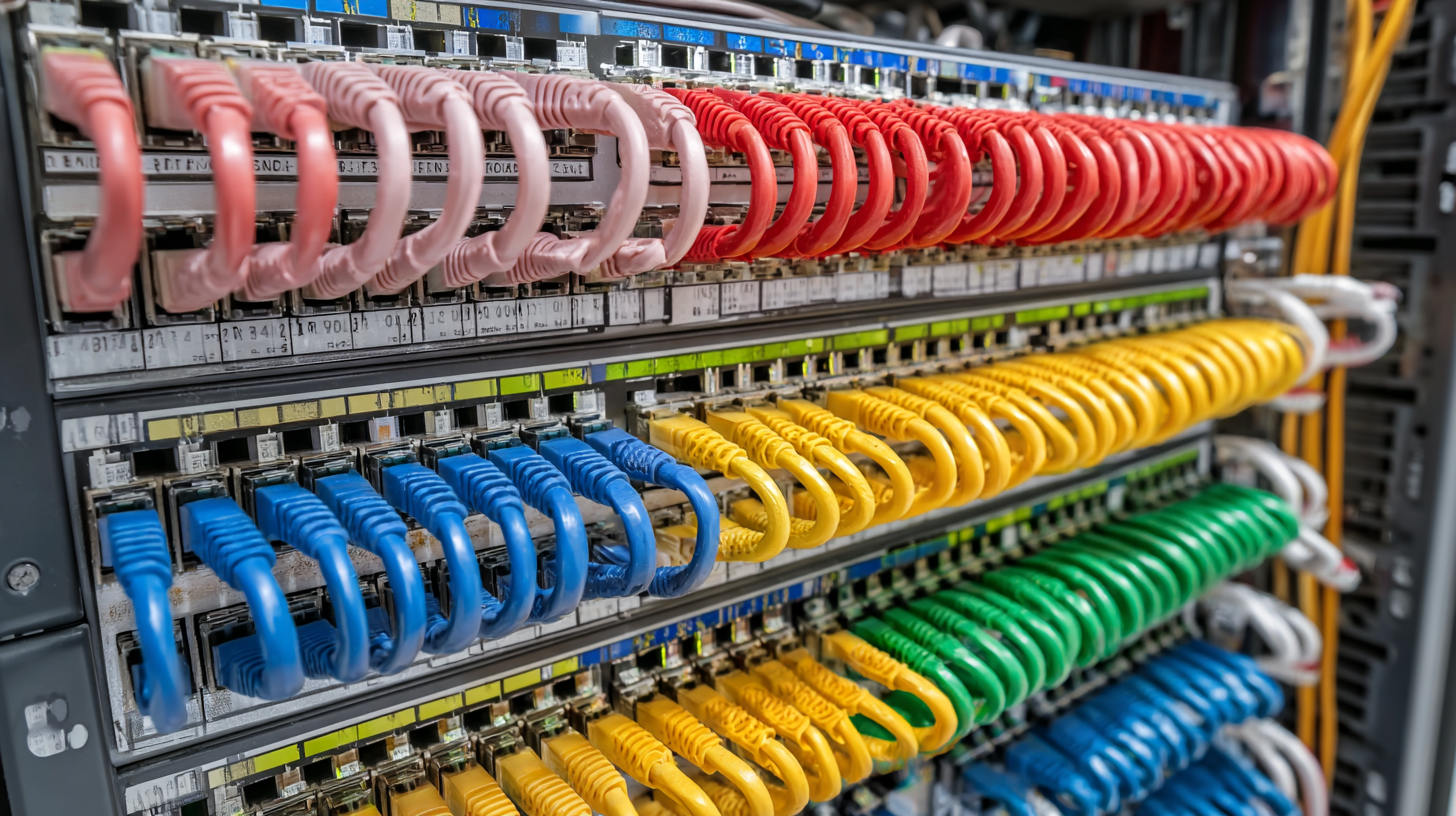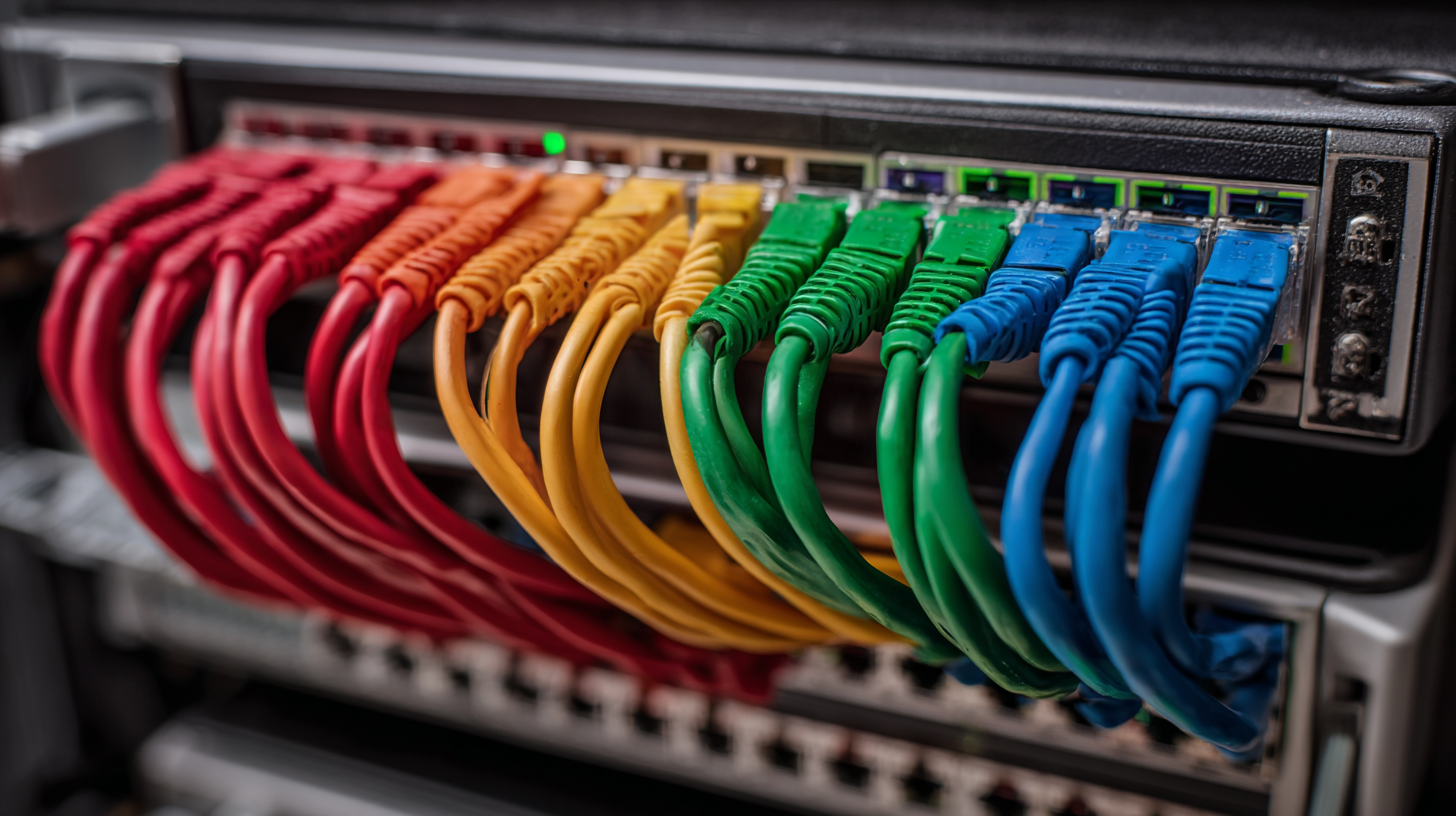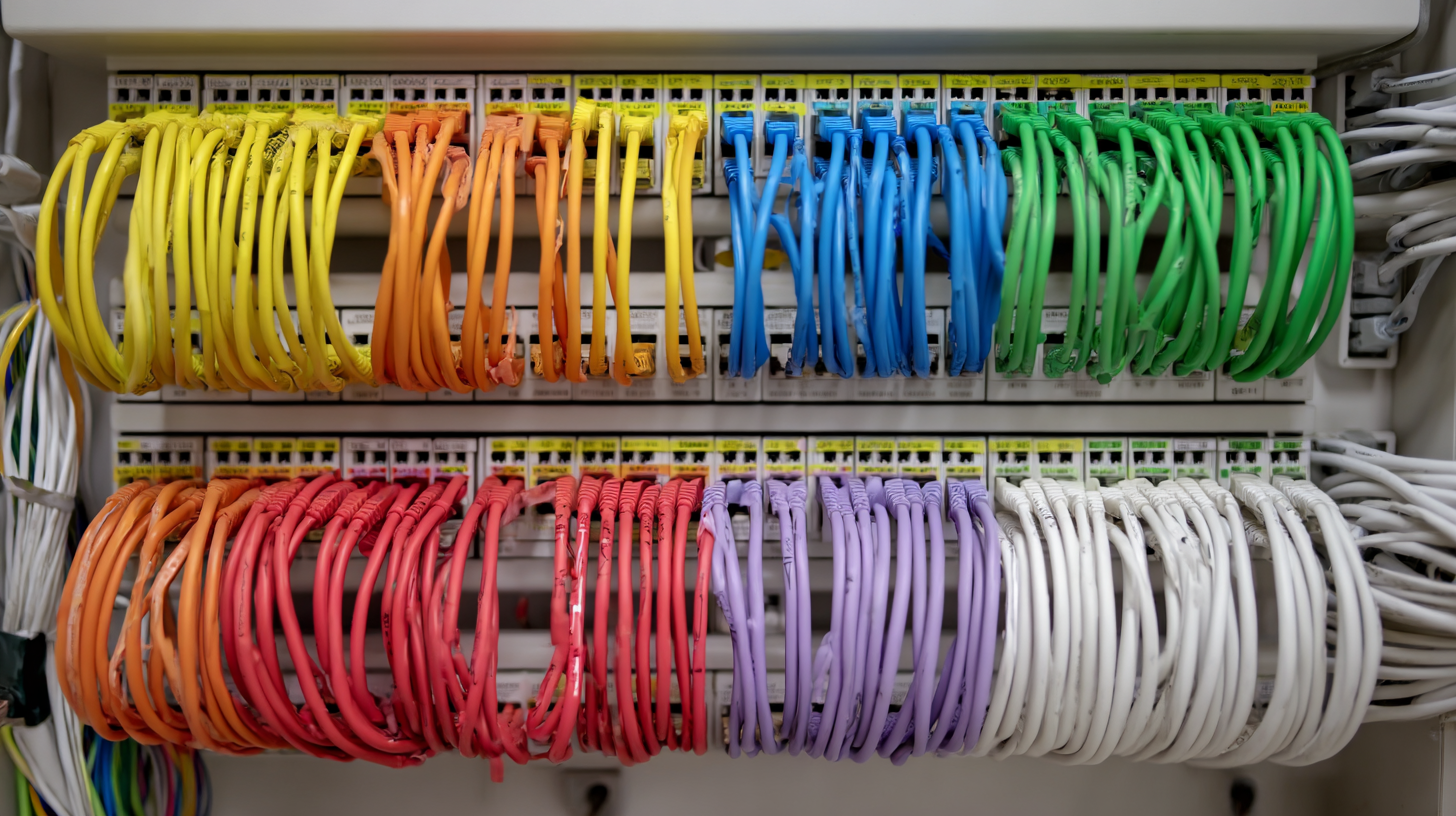In today's digital age, maintaining a well-organized network setup is crucial for both personal and professional environments.
Ethernet cable labels play a significant role in achieving this clarity,
as they help to track and identify network connections effortlessly. As industry expert John Smith, a renowned network technician,
once said, "A well-categorized network is not only visually appealing but also enhances operational efficiency."
His insight underscores the importance of using Ethernet cable labels to streamline connectivity and ensure that troubleshooting
becomes a less daunting task.
 As we delve into the top five strategies for organizing your network with Ethernet cable labels, it becomes clear that
a systematic approach can prevent the chaos that often comes with tangled wires and misidentified connections.
By implementing effective labeling practices, users can save time,
reduce frustration, and improve overall network performance. This guide will explore innovative methods, types of materials,
and best practices for creating an efficient labeling system that caters to the unique needs of your network setup.
Let’s embark on this journey to create a more organized and accessible network environment.
As we delve into the top five strategies for organizing your network with Ethernet cable labels, it becomes clear that
a systematic approach can prevent the chaos that often comes with tangled wires and misidentified connections.
By implementing effective labeling practices, users can save time,
reduce frustration, and improve overall network performance. This guide will explore innovative methods, types of materials,
and best practices for creating an efficient labeling system that caters to the unique needs of your network setup.
Let’s embark on this journey to create a more organized and accessible network environment.
 Using Ethernet cable labels is an essential practice for anyone looking to enhance network organization and efficiency. The growing demand for high-speed connectivity, particularly with the rise of data-heavy applications fueled by AI technologies, emphasizes the need for clear identification of network components. Research indicates that properly labeled cables can significantly reduce troubleshooting time, with studies showing that network administrators spend up to 30% of their time resolving connectivity issues. Efficient labeling can streamline this process, allowing for swift identification and maintenance of network connections.
Using Ethernet cable labels is an essential practice for anyone looking to enhance network organization and efficiency. The growing demand for high-speed connectivity, particularly with the rise of data-heavy applications fueled by AI technologies, emphasizes the need for clear identification of network components. Research indicates that properly labeled cables can significantly reduce troubleshooting time, with studies showing that network administrators spend up to 30% of their time resolving connectivity issues. Efficient labeling can streamline this process, allowing for swift identification and maintenance of network connections.
Moreover, the adoption of new technologies, such as Network MIDI 2.0, demonstrates how crucial organization is in modern networking. As MIDI devices start to communicate over Ethernet, the need for clear, labeled connections becomes paramount for musicians and producers relying on seamless communication and integration of multiple devices. Clear labeling promotes better workflow and minimizes downtime, which is critical in creative environments where efficiency is key. With the increasing complexity of networks, adopting Ethernet cable labels not only enhances organizational clarity but also supports a more robust and responsive network infrastructure.
Network downtime can significantly impact businesses, costing them not only in terms of lost revenue but also in terms of productivity and customer satisfaction. According to industry statistics, organizations can lose an average of $5,600 per minute during network downtime. This underlines the critical importance of effective cable management, particularly in ensuring that complex network infrastructures remain organized and functional. Proper labeling of Ethernet cables can avert confusion, reduce troubleshooting time, and enhance overall network reliability.
As the fiber optic components market continues to expand, with a projected growth from $5 billion in 2021 to over $9 billion by 2026, the need for effective cable management practices becomes even more essential. With components like transceivers and connectors increasing in complexity, maintaining a well-organized network through systematic labeling can prevent costly errors and downtime. Ensuring that each cable is accurately labeled not only streamlines repair processes but also enhances the scalability of your network as it grows, making it easier to integrate new technologies and applications efficiently.
When organizing a network, selecting the right type of Ethernet cable labels is critical for ensuring efficient maintenance and operation. According to a report by TechValidate, over 70% of IT professionals experience difficulties in troubleshooting network issues due to unlabelled or poorly labeled cables. This highlights the importance of using clear, durable cable labels that can withstand the rigors of a data center environment. The most essential types of labels include printable labels that can be customized according to specific needs and color-coded labels designed to simplify identification at a glance.
Another important consideration is the labeling method. For instance, self-laminating labels provide a protective layer against dust and moisture, crucial in server rooms where environmental factors can lead to wear and tear. A survey from Network World indicated that organizations using professional labeling systems saw a 50% reduction in time spent troubleshooting network connections. Furthermore, labels that incorporate QR codes can streamline inventory management, as they allow quick access to detailed info about each cable, fostering greater efficiency in network documentation. Utilizing the right label types not only enhances organization but also promotes overall productivity within IT operations.
When organizing your network, creating and applying Ethernet cable labels is crucial for maintaining clarity and efficiency. The first best practice is to use a standardized labeling system. This often includes a combination of letters and numbers that denote the location and function of each cable, making it easier to trace connections back to their source. For instance, labels like "SW1-02" can indicate the second port on switch 1, helping technicians quickly identify the specific cable during troubleshooting or upgrades.
Secondly, ensure that the labels are durable and easily readable. Utilizing high-quality label makers or printed labels can prevent wear over time, especially in environments subject to temperature fluctuations or dust. It’s also beneficial to use color-coded labels to differentiate between types of connections or networking equipment, providing visual cues that assist in faster identification. By implementing these best practices, you’ll establish an organized and manageable network infrastructure that simplifies maintenance and enhances overall performance.
| Label Type | Purpose | Recommended Material | Application Method | Durability |
|---|---|---|---|---|
| Self-Adhesive Labels | For quick identification of cable connections | Vinyl or Polyester | Peel and stick on cables | Water-resistant and UV protected |
| Color-Coded Tags | To categorize networks by usage or function | Plastic or Durable Cardstock | Tie around cables or clip-on | Moderately durable |
| Heat Shrink Labels | For a permanent solution | Polyolefin | Apply and heat shrink with a tool | Highly durable, heat and moisture resistant |
| Printable Labels | For customized labeling needs | Paper or Synthetic Material | Print from a label printer and apply | Varies, choose waterproof options for durability |
In the realm of networking, the effective labeling of Ethernet cables has evolved significantly with the advent of innovative technologies. Traditional methods often relied on manual labeling with stickers, which could quickly become outdated or misaligned. Today, solutions like heat shrink tubing, printable labels, and even advanced digital labeling systems offer a more reliable approach. These technologies enhance not only the clarity and professionalism of the network setup but also streamline maintenance tasks. For instance, using color-coded labels and barcodes can simplify the identification process, enabling technicians to swiftly locate specific cables without untangling or disconnecting multiple lines.

Moreover, the integration of software tools into the labeling process brings an added dimension of efficiency. Network management programs allow for real-time updates and tracking of cable configurations, reducing the potential for human error. With these tools, organizations can instantly generate labels with accurate information regarding the cable’s purpose and destination, which is particularly beneficial in complex environments like data centers. As businesses continue to rely on increasingly intricate network structures, embracing these innovative labeling technologies is crucial for maintaining organization, enhancing productivity, and ensuring seamless connectivity.
